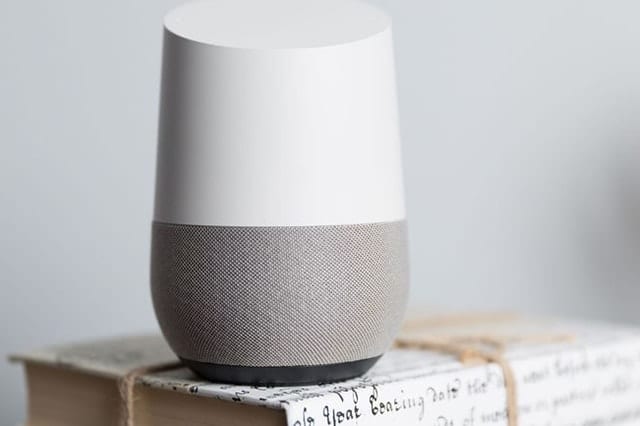Good news: setting up a Google Home doesn’t involve backbreaking work. You have to train the smart speaker to recognize each member of the family, though. Powering your smart home hasn’t been this easy. In fact, you’re only moments away from getting an ever-connected home humming.
It all begins with investing in smart technology, including smart lights, smart plugs, and smart kitchen devices to name a few. Although, you can already begin automating household chores with these, controlling them individually can be a hassle.
That’s where smart home hubs will come in handy. Think of them as the universal remote for your ever-expanding army of IoT devices. Wondering what smart hub to get for your home? We recommend you narrow down your search to these two: Amazon Echo vs. Google Home.
In case you’ve bought into Google’s ecosystem, Google Home will be the wise pick. We’ll tell you how to give the smart speaker the reins to your high-tech oasis.
Have Google Home recognize everyone
For starters, have your smart hub get acquainted with every family member and vice versa. Have everyone create a Google account (if they don’t have one yet) or sync their existing ones with the Google Home app. While you can still do tons with the smart speaker even without syncing everyone’s account, the personalization significantly improves your interaction with the device.
After synchronizing everyone’s accounts, get the Google hub familiar with everyone’s voices by having each member say the wake words a few times. Once everyone is done “training” the smart hub to recognize individual voices, let everyone throw a question or a command at Google Home. The Home should be able to differentiate each member and customize each response accordingly.
Set up Google Home in an optimal spot
To get the most from Google’s smart home hub, you should put it somewhere within everyone’s hearing range. That means placing it in busy areas where the family normally gathers—the kitchen or living room, for instance.
A central gathering place may be ideal, but you can put one in your bedroom. But if you have a large house, you’ll probably need more Google Home units for optimal coverage that way.
Sync your smart devices with Google Home
An initial setup process with the app is necessary for each smart home device you own. You need to create an account via Nest app if you have a Nest Thermostat or in Philips Hue app if you’ve got Philips bulbs, for instance.
While those partner apps will walk you through the initial setup, you have to set up an account for each of your family members. Luckily, Google Home can take this burden off your shoulders.
After you successfully connected IoT devices to the Internet, open the Google Home app. Tap the hamburger icon found on the upper left-hand corner and then select Home Control. Select the “+” button in the lower right to begin syncing your Google account with your smart device’s partner apps. You’ll begin importing devices shortly after.
Keep in mind that you have to name each connected device you add on Google Home. You could play around with the names, but make sure they’re brief and easy to distinguish once you start populating the list.
Assign devices to their rooms
Let’s say you have smart bulbs in every room in the house. How can you differentiate one from the other? Tap on the Room tab within the Home Control setup menu.
Simply add “table lamp” in the living room so Google Assistant will know what to do when you ask it to turn off the living room light/table lamp. Put in more smart lighting fixtures in the same room and you can now instruct Google Home to turn off all the living room lights when you’re about to hit the sack.
The Room feature helps the family control devices via Google Home without memorizing an entire collection of names. Say “turn on the kitchen smoke alarm” and Google Home will know not to touch the other alarms you’ve installed around the household.
Get started!
With Google Home up and running, you’ll only be a few IoT devices away from living the ultimate geek dream: a voice-activated smart home. A word of advice: don’t go buying a cartful of random smart home devices.
Begin with a couple of smart gadgets that you’d likely use a whole lot and make sure they’re part of the list of Google Home-compatible devices. Once you’re satisfied with your smart home’s setup, all you’re left to do now is command and conquer.
Smart home hubs like Google Home and Amazon’s growing list of Echo devices has opened our eyes to the possibility of owning a smart home without tearing down walls or replacing entire electrical systems. Even more impressive is the fact that anyone could easily build a futuristic home on the cheap with the help of these smart speakers.
If you want to have more fun with your smart home, we recommend you try these clever IFTTT recipes. Don’t forget to keep your IoT devices safe from cyber attacks, though. Thankfully, the Luma Guardian is around to lend you a hand in keeping your home network secure.


